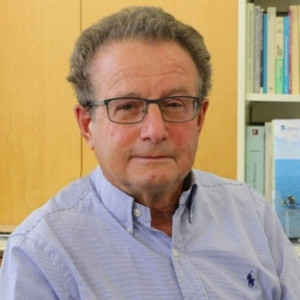Expert perspective: Professor Charles Eason CNZM CRSNZ FRSNZ

Professor Charles Eason CNZM CRSNZ FRSNZ, a toxicology and pharmacology specialist, gives a technical perspective on predator-control for biodiversity, focused on control technologies:
"Despite the eradication of predators from many islands and regional successes, there is a long way to go before we can reverse the decline in native species across increasingly large areas of mainland New Zealand.
There is some naïvety in what can be achieved and where resources will deliver return on investment.
The challenges of successively creating a new toxin/chemical entity (NCE), or blue-sky technologies from scratch are beyond the reach of small research teams in New Zealand who lack the resources, and multidisciplinary, regulatory or commercial skills required. This is not surprising given the research and development budgets of multinationals such as Bayer (approx. US$5.8 billion p.a) and Novartis (approx. US$10.0 billion p.a) to deliver NCEs or novel technologies. Both these companies have divested of their earlier interests in rodenticides, in favour of more lucrative options and what they might consider more appealing markets.
Solutions for predator control need to be “home grown”. New Zealand’s track record for innovation has been world leading in terms of adopting, adapting and repurposing toxins into new bait formulations, delivery systems and use patterns, that were never envisaged when these compounds were first synthesised in Europe or the USA for different uses.
Decades of research underpin the optimised use of 1080 and brodifacoum for mainland predator control and island eradications. A range of niche products have been produced specifically for conservation purposes. Amongst these the potential of diphacinone with cholecalciferol in bait, as an equipotent alternative to brodifacoum, to counter concerns regarding contamination of wildlife with residues, has yet to be fully realised. Similarly, the aerial application of meat baits containing para aminopropiophenone (PAPP) for stoat control presents opportunities for the future. The rodent-specific toxin norbormide, could become another useful tool in the toolbox now that inconsistencies in palatability, that hampered its utility for several decades, have now been rectified.
In conclusion it is naïve to believe that NCEs or novel biotechnologies will move beyond concept phase in the foreseeable future. Lessons from the huge global expenditure (circa NZ$100 million) on fertility control and virally-vectored immunocontraception should not be forgotten. Committed professionals reaching for new horizons with new delivery systems for existing toxins, AI, drones and resetting kill traps will extend reach of existing technologies. This is a prerequisite to enable landscape-scale control of predators, including at low densities, and when coupled with detection technologies will lead to significant advances in control. Cleverly adapting and repurposing existing compounds with toxic potential, new tools and emerging technologies, often developed overseas for quite different applications, combined with new landscape strategies provide a pathway for the future."
Published May 2025
 Professor Charles Eason CNZM CRSNZ FRSNZ, from Lincoln University, has a had a career in toxicology and pharmacology, initially in the development and registration of medicines, working within multinationals in Europe and then on pest control products in New Zealand. He specialised in the challenging area of vertebrate pesticide toxicology and product registrations and is internationally recognised for his work on the safety and effectiveness of different toxins.
Professor Charles Eason CNZM CRSNZ FRSNZ, from Lincoln University, has a had a career in toxicology and pharmacology, initially in the development and registration of medicines, working within multinationals in Europe and then on pest control products in New Zealand. He specialised in the challenging area of vertebrate pesticide toxicology and product registrations and is internationally recognised for his work on the safety and effectiveness of different toxins.
